Gaining access to funds for independent living requires a strategic approach to managing your finances. You can start by exploring personal savings, investments, and Social Security benefits to cover monthly expenses. Additionally, leveraging home equity through reverse mortgages or renting can provide significant financial support. Understanding how to access public benefits, like HUD housing vouchers, can also enhance your financial stability. With various options available, let’s reveal how each can contribute to a more sustainable independent lifestyle.
Key Takeaways
- Tap into personal savings, retirement accounts, and investments to cover living expenses for independent living.
- Utilize life insurance policies as a cash reserve by selling, surrendering, or borrowing against them for funds.
- Consider renting your home or a reverse mortgage to access home equity and generate income.
- Liquidate high-value assets like jewelry, antiques, or vehicles to boost financial resources quickly.
- Explore public benefits like HUD vouchers and SSI to secure additional financial assistance for low-income seniors.
Exploring Personal Funds for Living Expenses

When it comes to funding your independent living expenses, exploring personal funds is often a crucial first step. You might start by tapping into your savings, retirement accounts, or investments.
Exploring personal funds, such as savings and retirement accounts, is essential for managing independent living expenses.
Social Security retirement benefits can also contribute to your monthly costs, providing extra support. If you’re still working, part-time employment income can help ease financial strains.
Additionally, consider the equity in your home as a potential resource. By budgeting your personal finances effectively, you can create a solid plan that offers flexibility.
Exploring all these funding avenues is essential for ensuring your independent living experience is both comfortable and sustainable.
Leveraging Insurance Policies for Financial Support
While personal funds play an essential role in covering independent living expenses, insurance policies can also serve as a valuable financial resource.
You might consider tapping into life insurance policies, which can act as a cash reserve. Options include selling your policy or surrendering it for cash value.
If you prefer to maintain your coverage, taking out a loan against your policy can provide needed funds. Additionally, living benefit programs allow you to access some of the policy’s value without eliminating your coverage entirely.
Always consult with your insurance provider to understand the best options available for your situation.
Utilizing Home Assets to Fund Independence

Utilizing home assets can be a strategic way to fund your independence, especially when you consider the value tied up in your property.
You might explore options like renting your home, generating a steady income while maintaining ownership. Alternatively, a reverse mortgage can provide immediate access to your home equity, helping cover living expenses without selling.
Engaging with senior real estate specialists can simplify the selling process if you choose to sell. Each option offers unique benefits, so carefully assess your situation and long-term goals, ensuring you make informed decisions that align with your financial needs and lifestyle aspirations.
Selling High-Value Assets for Additional Resources
Exploring the option of selling high-value assets can provide a significant boost to your financial resources, complementing the income generated from home assets.
Consider selling items like jewelry, antiques, or collectibles that may hold substantial value. Additionally, liquidating stocks or bonds can quickly convert your investments into cash.
If you own a second vehicle, selling it not only eases insurance and maintenance costs but also adds to your funds. Recreational vehicles or boats can also be sold, allowing you to downsize while increasing your financial flexibility.
Each of these options can pave the way for a more comfortable independent living experience.
Accessing Public Benefits for Financial Assistance

Accessing public benefits can be an essential step in securing financial assistance for independent living. Programs like HUD’s housing choice vouchers can considerably lower your rent, while Supplemental Security Income (SSI) offers additional funds for low-income seniors.
To qualify for SSI, you’ll need to maintain a net worth below $2,000 for individuals or $3,000 for couples. Additionally, understanding Medicaid eligibility can provide important support for health-related expenses.
Frequently Asked Questions
What Are the Tax Implications of Selling Personal Assets?
When you sell personal assets, you might face tax implications, depending on the asset type and your overall income.
For example, selling stocks can result in capital gains tax if you sell for more than you paid.
However, selling your primary residence may allow you to exclude some profits from taxes if certain conditions are met.
Always keep records of your transactions and consult a tax professional to navigate these complexities effectively.
How Can I Improve My Credit Score for Better Loan Options?
To improve your credit score for better loan options, start by paying your bills on time, as timely payments greatly boost your score.
Reduce your credit card balances to below 30% of your total credit limit; this helps demonstrate responsible borrowing.
Additionally, avoid opening multiple new accounts at once, since each inquiry can lower your score.
Regularly check your credit report for errors and dispute any inaccuracies to make certain it reflects your true financial responsibility.
Are There Financial Advisors Who Specialize in Senior Living Funding?
Yes, there are financial advisors who specialize in senior living funding. They can guide you through various options, including personal savings, insurance policies, and public benefits.
These experts understand the unique challenges seniors face and can help create a tailored financial plan. You’ll benefit from their knowledge of available resources, ensuring you make informed decisions.
Research advisors with experience in senior finances to find the right fit for your needs and goals.
What Is the Average Cost of Independent Living Communities?
The average cost of independent living communities varies widely, typically ranging from $2,000 to $5,000 per month.
This cost depends on factors like location, amenities, and services offered. You’ll find that some communities provide meals, housekeeping, and social activities, which can influence pricing.
It’s essential to research and compare different options to find a community that fits your budget and lifestyle needs, ensuring you receive value for your investment in independent living.
How Can I Create a Budget for Independent Living Expenses?
To create a budget for independent living expenses, start by listing all your monthly income sources, including savings, part-time jobs, and any benefits.
Next, track your expenses, like housing, utilities, groceries, and healthcare. Categorize these into fixed and variable expenses to see where you can adjust.
Don’t forget to account for unexpected costs. Regularly reviewing your budget will help you stay on track and make informed financial decisions for your living situation.
Bottom Line
In summary, releasing funds for independent living requires a thoughtful blend of personal savings, asset management, and available public benefits. By exploring your financial options, like leveraging home equity or selling high-value items, you can create a sustainable budget that supports your independence. Remember, accessing resources such as Social Security or HUD housing vouchers can greatly enhance your financial stability. With careful planning and a proactive approach, you can enjoy a fulfilling, independent lifestyle.




